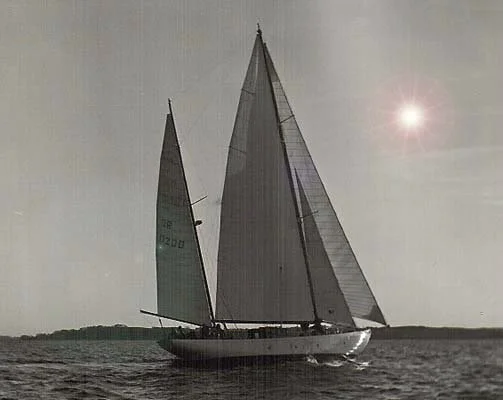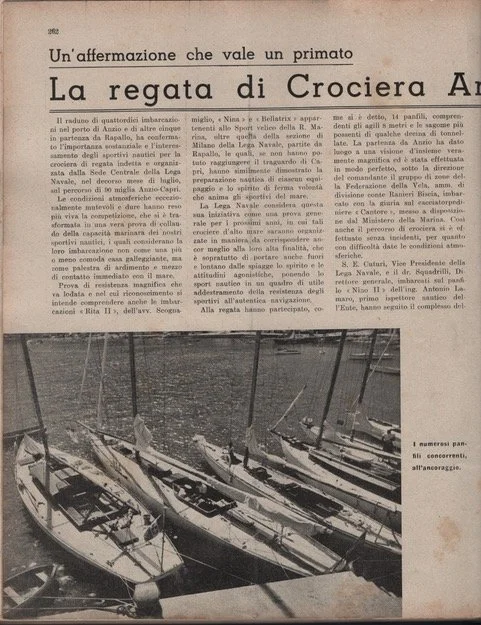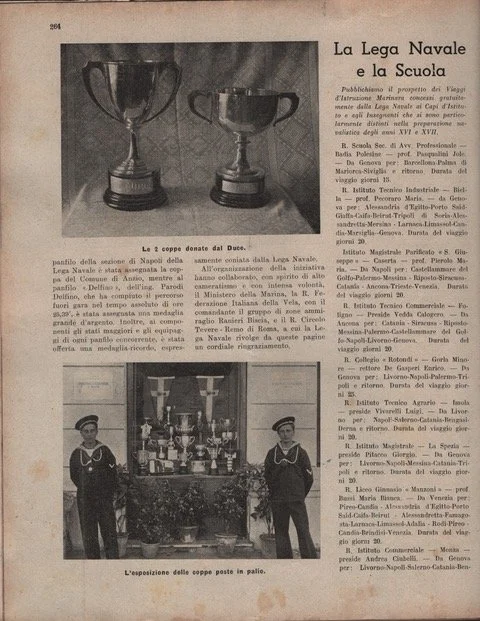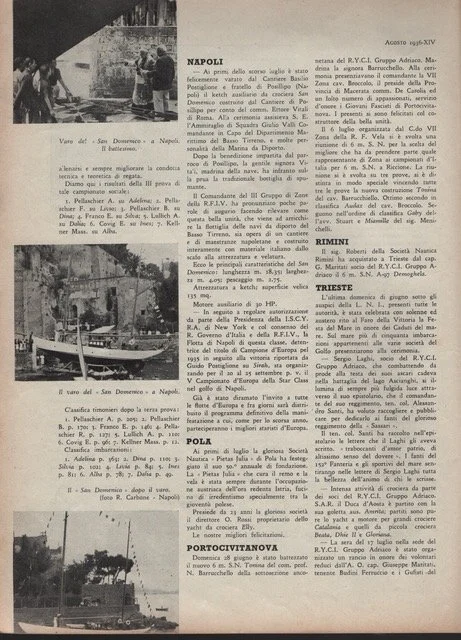History - San Domenico
The yacht San Domenico was built in 1936 at the Cantiere Navale Postiglione in Naples. Commissioned by the Roman architect Ettore Vitali and designed by the renowned naval architect François Camatte (1893–1960). The 18-meter sailing yacht was admired from the beginning for its refined lines and excellent craftsmanship. At the time, contemporary press described San Domenico as “la più bella barca del Mediterraneo” — the most beautiful yacht in the Mediterranean.
François Camatte (1893–1960)
François Camatte (1893–1960) was a renowned French naval architect celebrated for his elegant and highly functional yacht designs during the early to mid-20th century. After serving in the French military during World War I, where he was wounded at the Battle of Verdun, Camatte trained as a draftsman at shipyards in Arcachon and Antibes. Despite losing his right eye in a work accident, he continued to pursue his passion for yacht design with remarkable dedication.
Earlier in his career, Camatte had gained recognition for his MOCAT series of 5-meter yachts and designed over 60 yachts in the prestigious 6-Meter International Rule (6m JI) class, including the famous Thelma, which won 14 races in 1936. He also contributed to the development of the 5.50m JI class in collaboration with Eugène Cornu. Known for his meticulous hand-drawn designs, Camatte relied entirely on traditional drafting methods without modern technology, creating yachts that combined elegance with performance. His work left a lasting impact on the French sailing world, and yachts like San Domenico continue to be admired today for their beauty, craftsmanship, and the timeless design principles of one of the most influential yacht designers of his era.
A Shipyard of Tradition
The Postiglione shipyard was established in the early 20th century by Basilio Postiglione in Bacoli, near Naples. In its first years, the yard produced small wooden craft and fishing boats for the local community, before expanding into yacht storage, maintenance, and the construction of sailing yachts ranging from 8 to 18 meters.
By the 1930s, Cantiere Postiglione had become well known in Italian sailing circles, especially for its boats in the Olympic classes. Many of these yachts competed successfully in national and European regattas, earning the yard a reputation for reliability, speed, and technical skill. The building of San Domenico represented a milestone: an 18-meter yacht that showed the yard could move beyond competition craft and create a vessel of both elegance and ambition.
Sailing Culture in the 1930s
The interwar years were a formative time for yachting in the Mediterranean. Sailing was not only a sport, but also an expression of modern lifestyle and culture, drawing in professionals, entrepreneurs, and artists who saw the sea as a space of freedom and refinement. Italian shipyards, inspired by both tradition and international developments, were experimenting with new proportions and design ideas while still relying on the craftsmanship of wooden construction.
It was within this cultural setting that San Domenico was conceived. The yacht combined the speed and agility needed for competition with the elegance required for leisure cruising.
Vision and Commission
Her commissioner, Guido Vitali, was an architect from Rome with a passion for the sea. Like many cultivated Italians of the period, he was drawn to yachting as a way of uniting design, nature, and sport. Vitali’s ambition was to own a yacht that reflected both technical ability and aesthetic refinement. By commissioning San Domenico from Postiglione, he ensured that the yacht would embody the highest standards of Italian craftsmanship of the 1930s.
Restoration and Continuity
Over time, San Domenico has been carefully preserved and restored. After a period of limited use in the early 2000s, she underwent a hull and mast upgrade in Port Forum, Barcelona, Spain, followed by a full restoration at Van Veen & Sons in Stellendam, Netherlands, finished in 2019. These works respected her original design while preparing her for a new life at sea.
Legacy
Today, San Domenico is more than a sailing yacht. She represents the tradition of classical Mediterranean yachtbuilding, when craftsmanship, culture, and sport came together in wood, canvas, and wind. Built by a respected Neapolitan yard and commissioned by a visionary architect, she remains a living example of the elegance and spirit of classic sailing.





